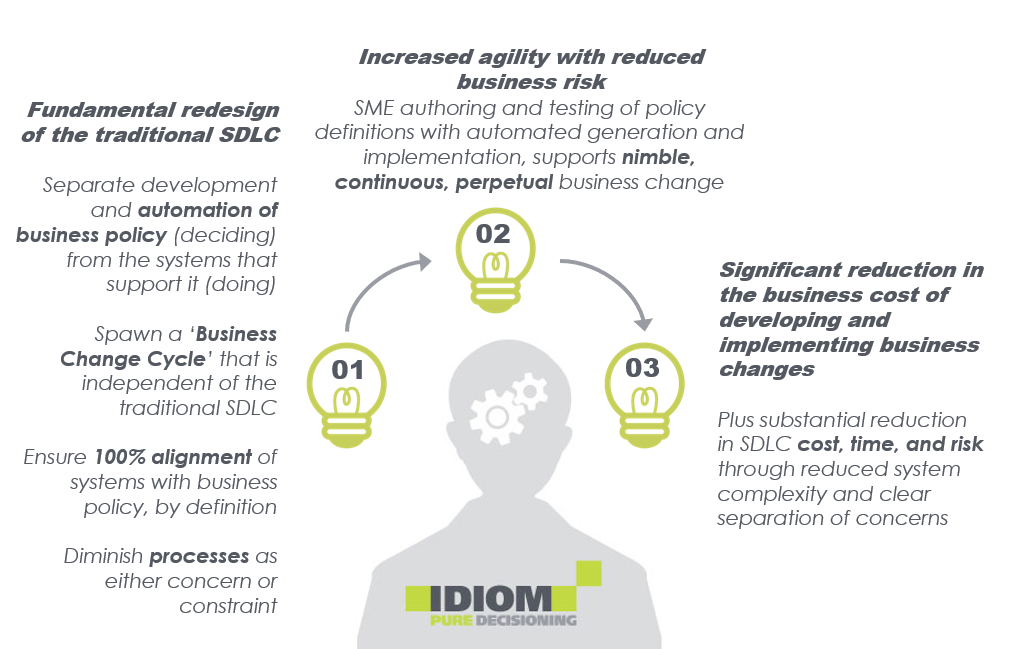Decisioning
Decisioning: The systematic discovery, definition, deployment, and execution of automated decision making.

Why is decisioning important? Decisions are the critical mechanism by which we choose one action from the set of all possible actions. The purpose of decision making is to select the action that is most beneficial in any given situation. A decision is 'made' when we use an amalgam of logic, algebra, and business rules to resolve all of the available data into a single definitive outcome - a decision cannot be multi-valued, ambiguous or tentative.
The decision outcome is achieved by using the discipline, knowledge and experience of the decision-maker to assemble the logic, algebra, and business rules that are required to respond to the specific problem or opportunity that is described by the available data. It is the logic, algebra, and business rules that are captured in the IDIOM Decision Models to define and ultimately control the business response. For this reason, Mr Douglas King, Chairman of Investors Guaranty said: “IDIOM is the key to understanding your business DNA”.
For business management, decisioning implements business policy and practice, as well as providing the ability to experiment with, test, and audit this policy throughout the life of the business. The business focus is on developing and managing the decisions that implement corporate policy.
For the developer, the decisioning components must integrate easily, execute quickly and predictably, and not otherwise constrain architectural options. The development focus is on providing a robust, well-engineered application infrastructure to service and respond to the IDIOM automated decision making.
For systems vendors, this plug and play approach also allows 'mass customization' by mixing and matching bespoke decisioning components within a common application. The Vendor focus is on mass customization.
Decisioning fits naturally into an automated systems framework. External events occur that require business responses. Where the business has many possible responses, decisions are required to determine the most beneficial response. The business usually has a strategy for making these decisions based on prior learning experiences; if it does not, a new learning experience is required. In a healthy organization, these learned experiences are captured as policy, which can then be automated using decisioning.
Decisioning demands a new development and architectural approach to leverage the automation of decision making. When implemented as plug and play components within a comparatively static application framework, decisioning can allow the system to respond rapidly to business changes without affecting the underlying code base. The decisions driving business behavior can adapt as fast as the business can learn.


